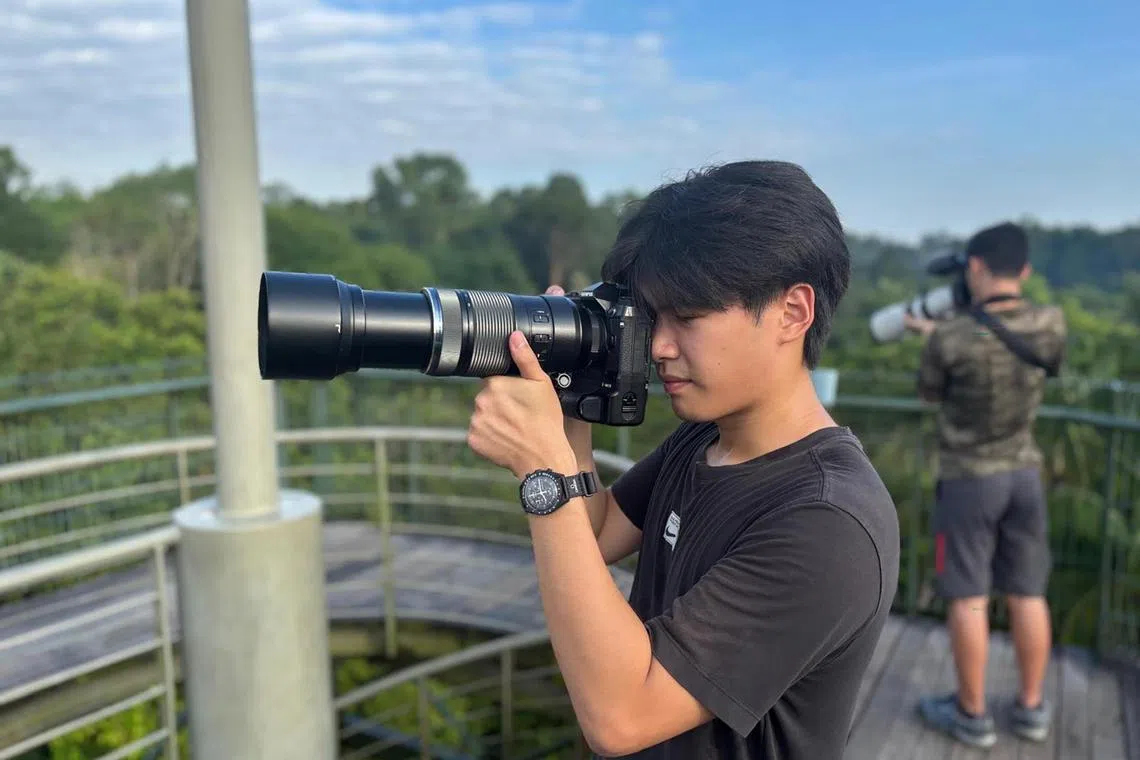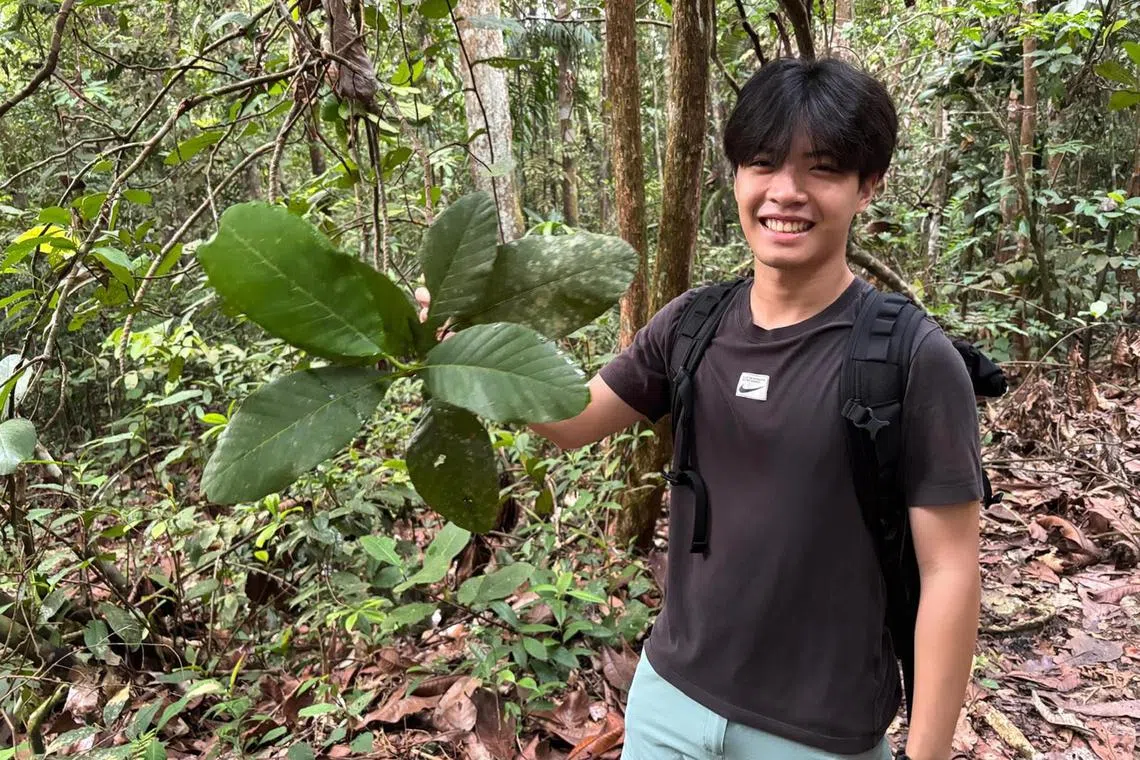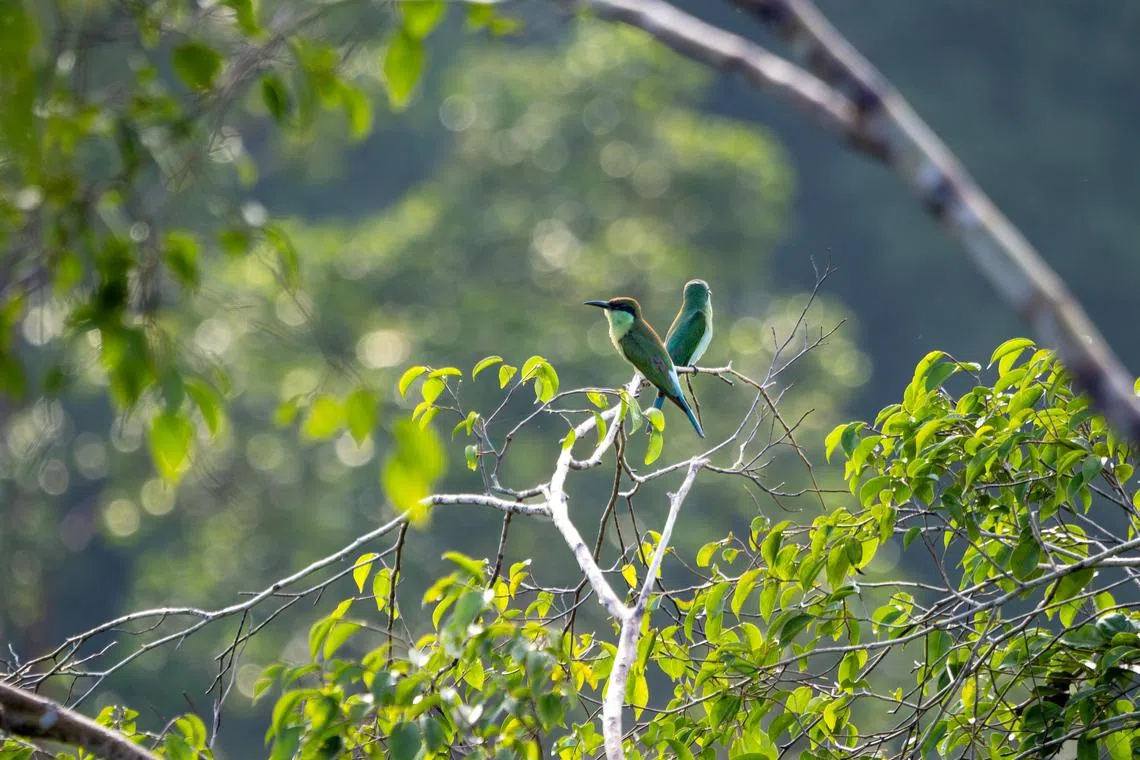From bird calls to biodiversity: Teen bird enthusiast works to protect Singapore’s wildlife
The TL;DR: Jayden Kang, 19, is a bird watcher and photographer who can identify birds simply by their calls. He is also a young advocate who is championing the preservation of biodiversity in Singapore.
Sign up now: Get ST's newsletters delivered to your inbox

Republic Polytechnic student Jayden Kang using his prized Olympus E-M1X camera to snap a photo while bird watching at the Jelutong Tower.
ST PHOTO: DILLON LOH
Follow topic:
SINGAPORE – It is 7am, and we are trekking deep into the Central Catchment Nature Reserve. Mr Jayden Kang hears a ringing bird call.
“You hear that? That’s a greater racket-tailed drongo,” he turns to me and says.
The 19-year-old animatedly describes the bird’s appearance and diet. He recounts previous instances of seeing the bird on bird-watching expeditions. He can even mimic the drongo’s call with striking similarity.
Honed over three years of bird watching, his extraordinary ability to recognise calls and encyclopaedic knowledge extend to all 202 species of birds that have been observed near his usual bird-watching spot of Jelutong Tower, a seven-deck observation tower that provides a panoramic view of the Central Catchment Nature Reserve. He especially likes watching blue-winged leafbirds and chestnut-bellied malkohas at Jelutong Tower.
The environmental and marine science student at Republic Polytechnic was first introduced to bird watching after seeing photos of a bird-watching trip to Windsor Nature Park in March 2021 that a friend posted online.
Accompanied by the friend, he went looking for birds at Jelutong Tower in December 2021.
“I didn’t actually see many birds (during my first trip),” he recalls. “But the scenery, the hiking and the soundscape of the forest got me hooked, so I’ve tried to return (to the tower) to bird-watch every Sunday since.”

Every Sunday, 19-year-old Jayden Kang hikes through the Central Catchment Nature Reserve to do bird watching at Jelutong Tower.
ST PHOTO: DILLON LOH
His dedication to his hobby led him to spend $3,700 in November 2022 on a camera for wildlife photography that can take photos from up to 300m away. He saved two months of his salary working part-time at the customer service counter at the Singapore Botanical Gardens to afford it.
It was not uncommon to find Mr Kang bird watching for up to four hours at a time before or after his shifts while he saved up for his new camera. In 2022, he spent a collective 1,200 hours working and bird watching at the Botanical Gardens.
His love for nature has also gone beyond just birds. In January 2023, Mr Kang joined the Singapore Youth Voices for Biodiversity (SYVB), an organisation that focuses on educating and empowering Singaporean youth in the field of biodiversity policy.
“We’re advocating for nature-based solutions,” he said. “When most people think of how to make Singapore less hot, they think of more air-conditioning. We want them to think of planting more trees instead.”
Mr Kang is responsible for the organisation’s social media coverage. He also leads guided walks through green spaces, aiming to educate the public about biodiversity in Singapore and the need to protect it.

A photo of a pair of blue-throated bee-eaters taken by Republic Polytechnic student Jayden Kang.
PHOTO: COURTESY OF JAYDEN KANG
Mr Kang’s latest policy concern is the construction of the Cross Island Line (CRL), Singapore’s eighth and newest MRT line, which runs from Changi to Jurong. Its first phase is due to be completed in 2030.
As it is due to cut through the Central Catchment Nature Reserve
He said: “As is stands, it (the CRL) will reduce travel times, but at the expense of biodiversity.”
Nature groups advocated for an alternative path that would skirt the nature reserve, but the Government decided to go ahead with a direct route that it says would make the project cheaper and more environmentally friendly in the long run, after a two-phase environmental impact assessment was conducted.
The tunnel for the CRL will still go under the nature reserve, but at a far greater depth than originally planned, among other mitigation meaures.
Despite his concerns, Mr Kang is hopeful about the future of Singapore’s biodiversity.
“In an ideal world, organisations (like SYVB) wouldn’t need to exist. I hope that one day, we’ll only have organisations that celebrate biodiversity, rather than organisations that have to protect it.”

